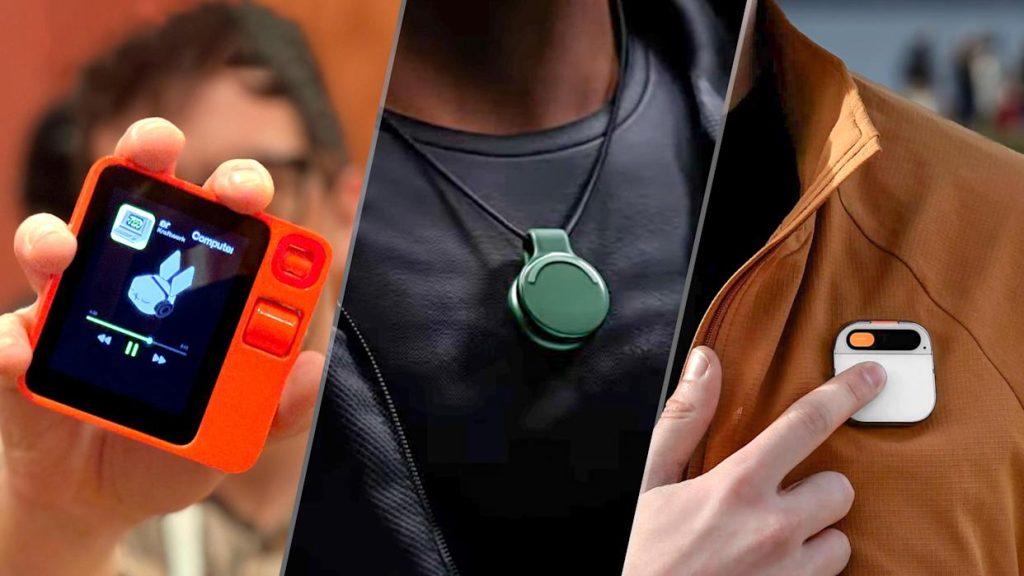The consumer tech market is facing a turning point with the launch of next-generation AI wearables: the Rabbit R1 and the Humane AI Pin. Both promise to streamline digital life, put powerful AI at your fingertips, and challenge the very idea of the smartphone. But can these pioneering devices truly replace the robust versatility and deep-rooted habits of mobile phones?
This article digs into each product’s real-world capabilities, market reception, and technology evolution, helping consumers understand if these AI gadgets herald a post-smartphone revolution—or are simply smart companions with niche appeal.

The Rise of AI Wearables
AI wearables mark a major industry shift from screen-centric devices to ambient, voice-first computing. Frictionless interaction is at the heart of Rabbit R1 and Humane AI Pin, with both leveraging large foundation models for language and action:
- Rabbit R1: A compact, handheld AI assistant with a 2.88-inch touchscreen, scroll wheel, mic, camera, and voice-first interface. It runs on Rabbit OS, aiming to replace apps with natural dialogue and direct automation.
- Humane AI Pin: A screenless wearable, clipped to clothing, using voice, laser projection, and camera to execute tasks. It relies on hand gestures and voice commands, seeking to make the phone invisible and AI always present.
Real-World Features and Hardware Specs
Rabbit R1
- Octa-core MediaTek MT6765 processor
- 2.88-inch color display, scroll wheel, microphone, speaker
- 8MP camera with visual search and creative AI
- Voice input for multitasking and app control (Uber, DoorDash, Spotify, Midjourney, photo search, translation)
- $199 retail price
Humane AI Pin
- Octa-core Qualcomm Snapdragon processor
- 32GB storage, 4GB RAM
- 13MP camera, advanced laser projection (720p)
- No screen; projects info onto the palm or surfaces
- Always-listening Trust Light for privacy
- $699 retail price, $24/month subscription for cellular/data
Everyday User Experience
- Rabbit R1 offers a retro-futuristic vibe—a walkie-talkie look with always-on AI and app-free navigation. It executes tasks via voice instructions (call a ride, query a service, AI-based photo editing), but current reports highlight limited service compatibility, steep learning curves, and short battery life (about 6-8 hours active).
- Humane AI Pin is designed for voice-only interaction, projecting immediate answers, directions, notifications, or translations on your hand. It supports basic communication (calls, texts), photo and video, and real-time environmental understanding, but is still limited by subscription costs, missing apps, and some privacy skepticism.
Comparison with Smartphones
- Strengths: Both devices shine in quick queries, instant voice tasks, and hands-free moments—think rapid translation, task reminders, or contextual information when walking.
- Weaknesses: Smartphones provide a mature ecosystem for complex multitasking (navigation, banking, streaming, shopping, gaming), app diversity, reliable connectivity, and continuous updates. Both Rabbit R1 and Humane AI Pin lack the flexibility, app depth, and reliability of modern smartphones in 2025.
Privacy, Security, and Adoption Concerns
The “always listening” nature raises questions about data privacy, accidental recordings, and reliance on cloud services. Humane AI Pin tries to address this with the “Trust Light” indicator, but many users remain wary about ambient AI and potential surveillance—even as these devices aim for intuitive convenience.
Market Reception and Consumer Reality
Early reviews and benchmarks reveal:
- Rabbit R1: Noted as “fun, different, but limited,” with major improvements needed in software, battery, and action model depth before it can be considered a phone replacement.
- Humane AI Pin: Criticized for high price, subscription model, and lack of mass appeal compared to phones. User feedback suggests most consumers prefer to use the Pin as a secondary device for specific quick tasks, not as a daily-driver phone.
Both products are recognized as ambitious, with potential for future disruption, but are not poised to overturn the central role of smartphones in the 2025.
Future Outlook: Ambient Computing or Niche Companion?
Rabbit R1 and Humane AI Pin push boundaries in wearables and conversational AI, shaping a vision where screenless, voice-first devices could one day supplant phones. For now, they are best seen as innovative add-ons—useful for instant, context-driven AI assistance, but lacking the comprehensive utility and network of established smartphones.
Tech experts argue that while these products open the door for ambient, more intuitive tech, consumer habits, app ecosystems, and hardware limitations keep smartphones ahead as the anchor of modern life in 2025.
Conclusion: Should Consumers Switch?
Rabbit R1 and Humane AI Pin represent a fascinating step towards ambient AI and voice-powered computing, with unique features for tech enthusiasts, frequent travelers, or ultra-connected users. However, as of late 2025:
- They do not replace the versatility, reliability, and robust ecosystem of smartphones for most consumers.
- They are best used as secondary accessories to complement your mobile setup, tackle quick tasks, or experience the latest in AI innovation.
- For the majority seeking full app access, performance, and digital lifestyle integration, smartphones remain the most practical and powerful choice.
Early adopters may enjoy experimenting with these devices, but mainstream users should view Rabbit R1 and Humane AI Pin as glimpses into the future—not replacements for their daily phone just yet.



